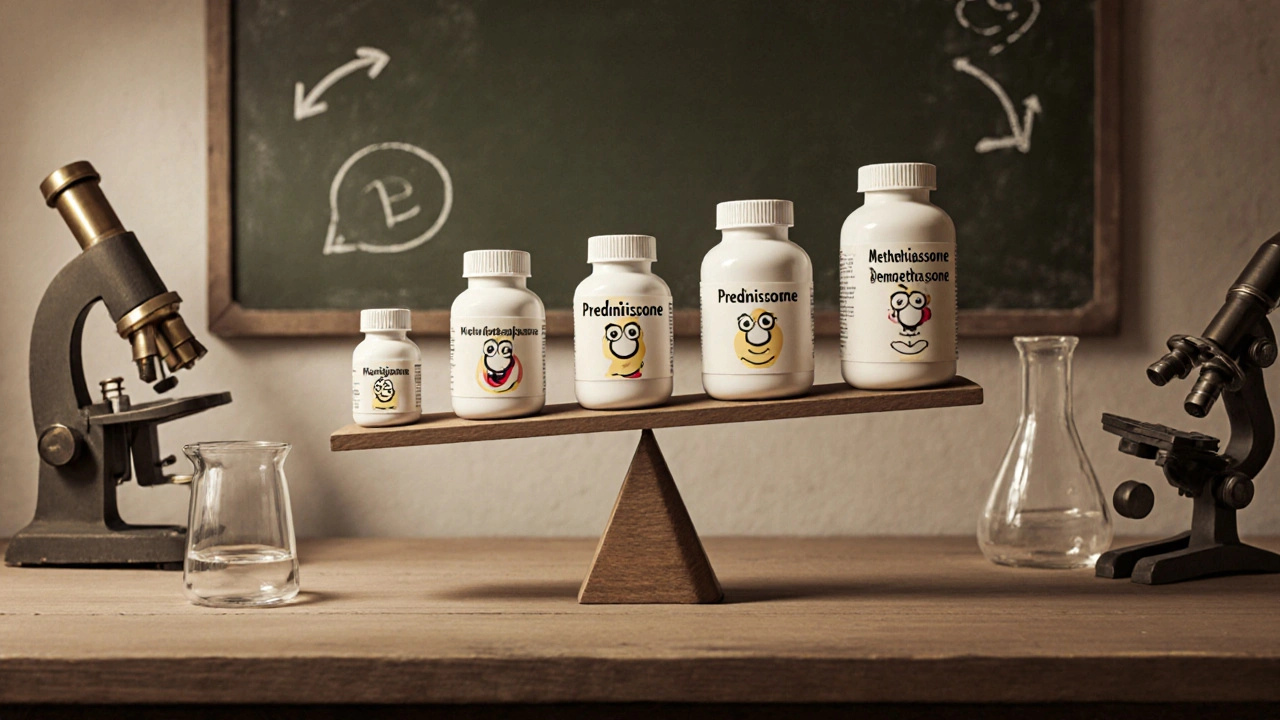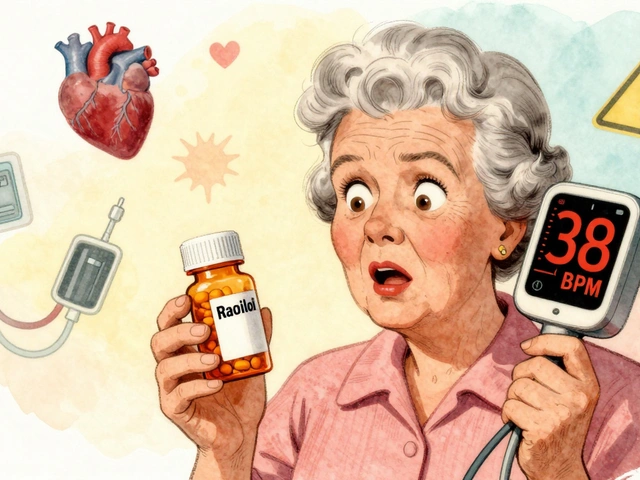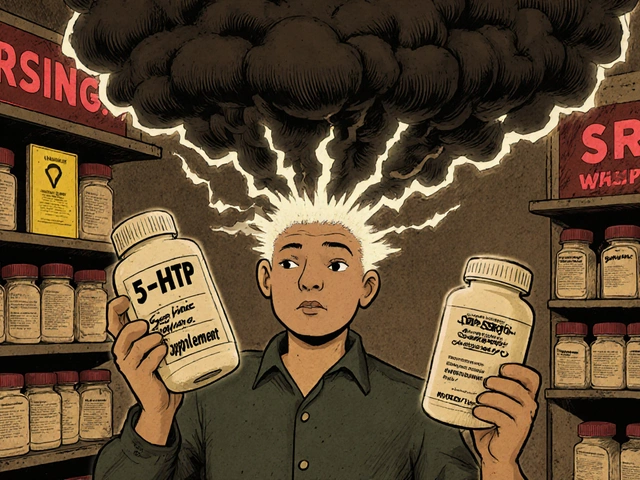Corticosteroid Potency Calculator
Choose Your Current Steroid
Equivalent Steroid Doses
Based on relative potency compared to Hydrocortisone (1x):
Important Note: Always consult your healthcare provider before changing medications. This tool shows relative potency but does not account for individual patient factors, conversion protocols, or clinical context.
When your doctor prescribes a steroid, you want to know if there’s a better option for your specific condition. Prednisolone alternatives are a hot topic for anyone dealing with inflammation, auto‑immune disorders, or allergic reactions. This guide breaks down Omnacortil (Prednisolone), looks at the most frequently used substitutes, and gives you a clear decision framework.
What Is Omnacortil (Prednisolone)?
Prednisolone is a synthetic glucocorticoid that mimics the natural hormone cortisol. It belongs to the corticosteroid class and is marketed under brand names like Omnacortil. First approved in the 1950s, it quickly became a go‑to drug for reducing inflammation and suppressing an overactive immune system.
How Prednisolone Works
Prednisolone binds to glucocorticoid receptors inside cells, altering gene expression to curb the production of inflammatory chemicals such as prostaglandins and leukotrienes. The result is fewer redness, swelling, and pain signals. Because it acts systemically, it can affect multiple organs, which is why dosing and monitoring are critical.
Benefits and Risks of Prednisolone
- Fast symptom relief - effects often appear within hours.
- Broad therapeutic range - used for asthma, rheumatoid arthritis, lupus, skin conditions, and more.
- Oral administration - tablets are convenient compared to injectable steroids.
However, long‑term use carries notable risks:
- Weight gain and fluid retention.
- Elevated blood sugar, which can trigger or worsen diabetes.
- Bone density loss, increasing osteoporosis risk.
- Suppressed adrenal function, making abrupt cessation dangerous.

Common Alternatives to Prednisolone
Doctors often switch patients to other glucocorticoids or to drugs that target inflammation through different pathways. Below are the most common substitutes, each with its own potency profile and side‑effect spectrum.
Prednisone is the pro‑drug of prednisolone, meaning the liver converts it into the active form. It’s typically used when oral dosing flexibility is needed.
Dexamethasone ranks among the most potent corticosteroids, offering strong anti‑inflammatory action even at low doses.
Hydrocortisone mirrors natural cortisol more closely, making it a gentler option for short‑term or topical use.
Methylprednisolone provides higher potency than prednisolone with a slightly different side‑effect profile, often chosen for intravenous therapy.
Side‑by‑Side Comparison
| Attribute | Prednisolone (Omnacortil) | Prednisone | Dexamethasone | Hydrocortisone | Methylprednisolone |
|---|---|---|---|---|---|
| Potency (relative to Hydrocortisone) | 4‑5× | 4‑5× (converted in liver) | 25‑30× | 1× (baseline) | 5‑6× |
| Typical Oral Dose | 5‑60mg/day | 5‑60mg/day | 0.5‑9mg/day | 20‑60mg/day | 4‑48mg/day |
| Onset of Action | 2‑4hours | 2‑4hours | 1‑2hours | 2‑4hours | 2‑4hours |
| Key Advantages | Well‑studied, oral convenience | Pro‑drug flexibility, cheap | High potency, useful for severe flare‑ups | Closest to natural cortisol, low potency side‑effects | IV formulation, strong potency with lower mineralocorticoid activity |
| Major Risks | Weight gain, glucose rise, osteoporosis | Same as prednisolone, plus liver‐conversion variability | Severe immunosuppression, mood changes | Limited anti‑inflammatory effect, may need higher doses | Potential for rapid HPA‑axis suppression |
How to Choose the Right Steroid
Picking a corticosteroid isn’t a one‑size‑fits‑all decision. Consider these three axes:
- Potency needed. Mild skin eczema may only need hydrocortisone, while a lupus flare might demand dexamethasone.
- Administration route. Oral drugs like prednisolone or prednisone are convenient, but IV methylprednisolone works better for acute hospital settings.
- Side‑effect tolerance. Patients with diabetes should avoid high‑dose prednisolone; a lower‑potency alternative can reduce blood‑sugar spikes.
Always discuss with your clinician. Blood tests for glucose, electrolytes, and bone density help gauge long‑term safety.
Practical Tips for Managing Steroid Therapy
- Start at the lowest effective dose and taper slowly to avoid adrenal crisis.
- Pair steroids with calcium+vitaminD supplements to protect bone health.
- Monitor weight, blood pressure, and mood changes weekly during the first month.
- Ask your doctor about a “steroid‑sparing” plan using disease‑modifying agents when possible.
- Never stop a high‑dose regimen abruptly; always follow a taper schedule.
Frequently Asked Questions
Is Prednisone stronger than Prednisolone?
Prednisone itself isn’t stronger; it’s a pro‑drug that the liver converts into prednisolone. The clinical effect is essentially the same once converted.
When would a doctor choose Dexamethasone over Prednisolone?
Dexamethasone is chosen for high‑potency needs, such as severe cerebral edema, certain cancers, or rapid‑acting anti‑emetic protocols. Its stronger effect allows lower dosing, which can be beneficial when minimizing fluid retention.
Can I switch from Prednisolone to Hydrocortisone for long‑term use?
Yes, but the switch usually involves a taper because hydrocortisone is much less potent. Patients often need higher milligram doses, which can increase the pill burden.
What are the signs of adrenal suppression after stopping steroids?
Symptoms include severe fatigue, nausea, low blood pressure, and dizziness. Lab tests will show low cortisol levels. A proper taper reduces this risk.
Are there any natural alternatives to corticosteroids?
For mild inflammation, omega‑3 fatty acids, curcumin, and certain botanical extracts can help, but they don’t replace the potency needed for severe autoimmune flare‑ups. Always discuss supplement use with your physician.
Understanding the nuances between Prednisolone and its alternatives empowers you to have an informed conversation with your healthcare provider. Whether you need a fast‑acting, high‑potency steroid or a gentler option for chronic use, the right choice hinges on your condition, dosage needs, and tolerance for side effects.







Write a comment
Your email address will be restricted to us